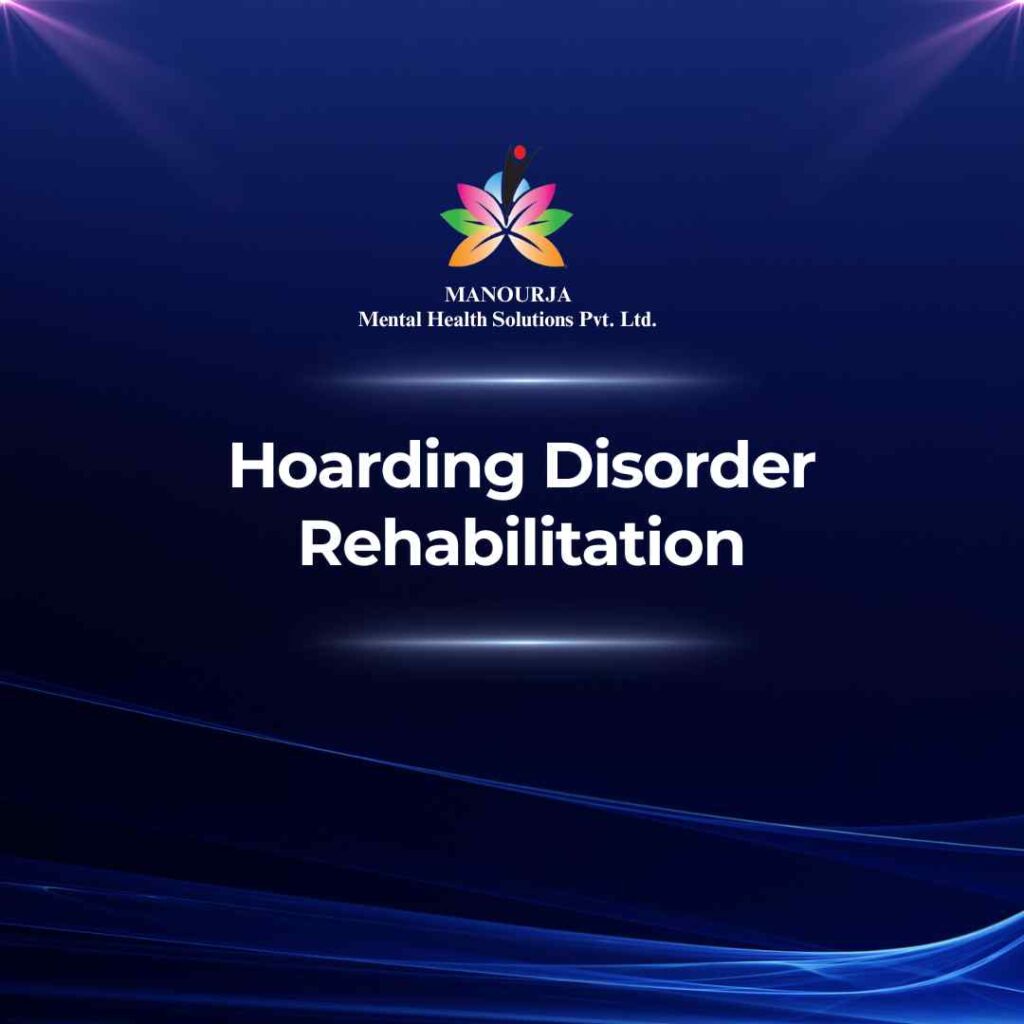Hoarding Disorder Rehabilitation

Hoarding Disorder is characterized by the persistent difficulty discarding or parting with possessions, regardless of their actual value. This behavior often results in the accumulation of possessions that congest and clutter active living areas and substantially compromise their intended use.
Signs and Symptoms of Hoarding Disorder
- Persistent Difficulty Discarding Items: A perceived need to save items and distress associated with discarding them.
- Cluttered Living Spaces: Homes filled to capacity; rooms cannot be used as intended due to clutter.
- Compulsive Acquisition: Ongoing urges to collect or buy more items, even when not needed or there is no space available.
- Distress or Impairment: Significant distress or impairment in social, occupational, or other important areas of functioning due to hoarding.
- Safety Concerns: Severe disorganization and clutter may pose health or safety risks (e.g., fire hazard, tripping hazards).
Indicators for Outpatient Psychosocial Rehabilitation (OPD)
- Mild to Moderate Hoarding: Individuals who recognize a problem and are motivated to seek help may benefit from outpatient services.
- Good Support System: Availability of family or community support that can assist with in-home decluttering and maintenance of organization.
- Functioning Daily Life: The individual is still able to perform daily tasks and routines despite the hoarding behavior.
Indicators for Inpatient Psychosocial Rehabilitation (IPD)
- Severe Hoarding: Extreme clutter filling and blocking living spaces, significantly impairing daily functioning.
- Health and Safety Risks: Hoarding that poses serious risks to the individual’s or others’ health and safety.
- Lack of External Support: Insufficient family or community support to address the disorder on an outpatient basis.
Factors Influencing the Decision
- Severity of the Disorder: More intense hoarding that severely impacts health and living conditions may require inpatient treatment.
- Previous Interventions: Previous unsuccessful outpatient treatments or interventions.
- Co-occurring Mental Health Issues: Additional disorders such as depression or anxiety that complicate the hoarding behavior.
How Psychosocial Rehabilitation Aids in Treating Hoarding Disorder
Psychosocial rehabilitation focuses on reducing the hoarding behaviors, improving organizational skills, and addressing underlying emotional issues. Effective management involves both psychological and practical interventions.
Techniques and Approaches Utilized at MANOURJA
- Cognitive Behavioral Therapy (CBT): Helps individuals challenge and change their beliefs about the need to keep items and address the emotional distress associated with discarding them.
- Skill-Building Activities: Teaches organizational skills, decision-making, and planning to help manage possessions more effectively.
- Group Therapy: Provides support from others who struggle with hoarding, facilitating shared experiences and tips.
- Home Visits: Therapists or professional organizers help implement strategies directly within the home environment.
- Exposure Therapy: Gradually encourages individuals to discard items in a controlled and therapeutic manner to lessen the anxiety associated with discarding.
Steps Followed at MANOURJA for Rehabilitation
- Initial Assessment: Comprehensive evaluation of the extent of hoarding and its impact on the individual’s functioning.
- Personalized Treatment Planning: Development of tailored interventions that address both emotional and practical needs.
- Implementation of Interventions: Scheduled therapeutic sessions focusing on cognitive restructuring, skill development, and exposure exercises.
- Ongoing Support and Adjustment: Regular meetings to assess progress and make necessary adjustments to the treatment plan.
- Aftercare and Maintenance: Strategies to prevent relapse and maintain progress, including regular follow-ups and continued support groups.
“Clearing your space opens the door to a renewed sense of freedom.”
